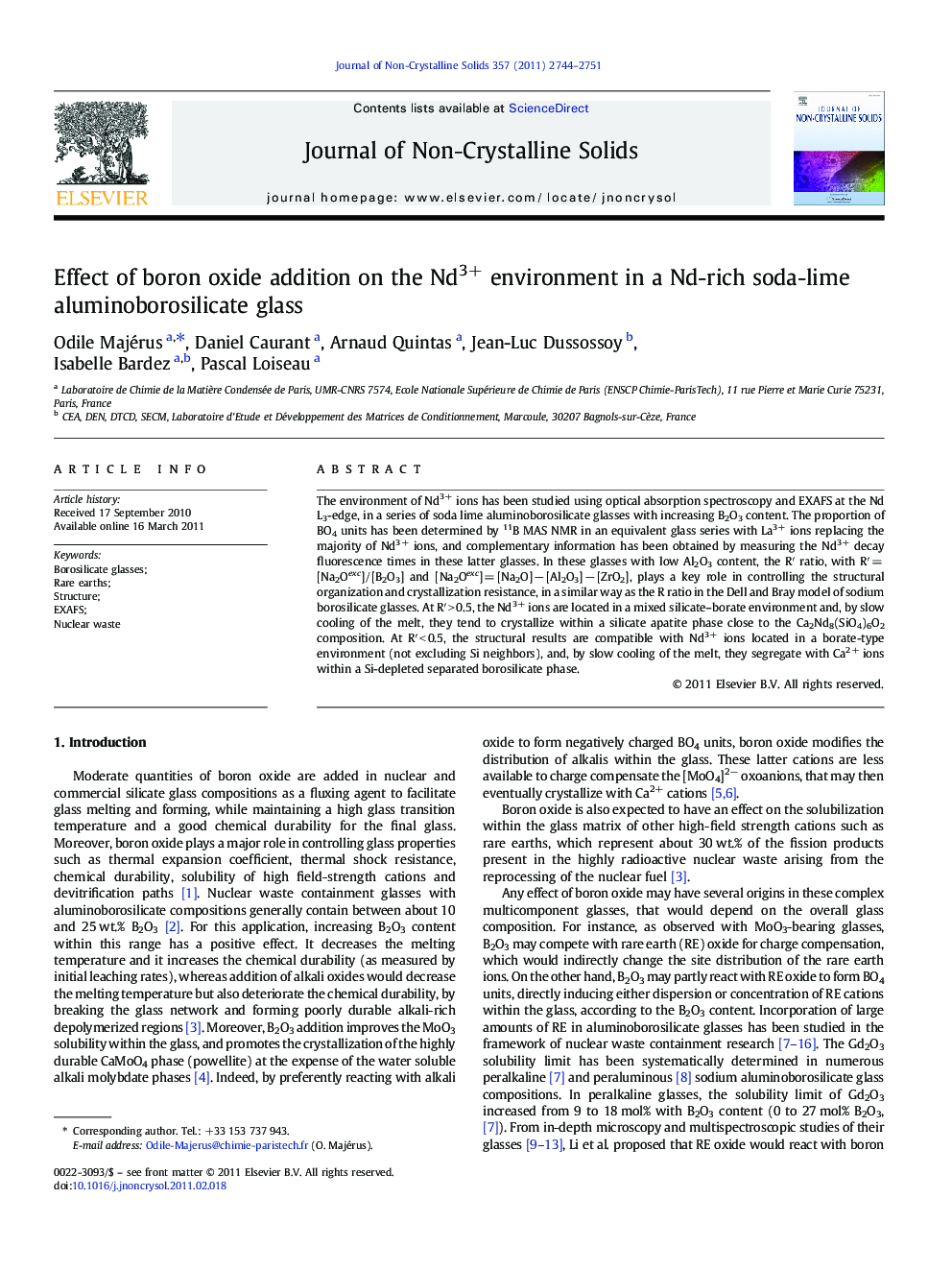| Article ID | Journal | Published Year | Pages | File Type |
|---|---|---|---|---|
| 1482685 | Journal of Non-Crystalline Solids | 2011 | 8 Pages |
The environment of Nd3+ ions has been studied using optical absorption spectroscopy and EXAFS at the Nd L3-edge, in a series of soda lime aluminoborosilicate glasses with increasing B2O3 content. The proportion of BO4 units has been determined by 11B MAS NMR in an equivalent glass series with La3+ ions replacing the majority of Nd3+ ions, and complementary information has been obtained by measuring the Nd3+ decay fluorescence times in these latter glasses. In these glasses with low Al2O3 content, the R′ ratio, with R′ = [Na2Oexc] / [B2O3] and [Na2Oexc] = [Na2O] − [Al2O3] − [ZrO2], plays a key role in controlling the structural organization and crystallization resistance, in a similar way as the R ratio in the Dell and Bray model of sodium borosilicate glasses. At R′ > 0.5, the Nd3+ ions are located in a mixed silicate–borate environment and, by slow cooling of the melt, they tend to crystallize within a silicate apatite phase close to the Ca2Nd8(SiO4)6O2 composition. At R′ < 0.5, the structural results are compatible with Nd3+ ions located in a borate-type environment (not excluding Si neighbors), and, by slow cooling of the melt, they segregate with Ca2+ ions within a Si-depleted separated borosilicate phase.
